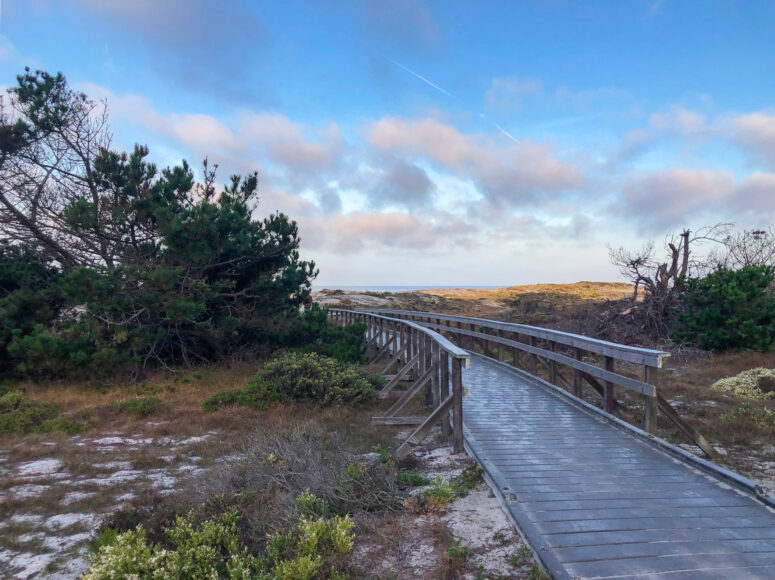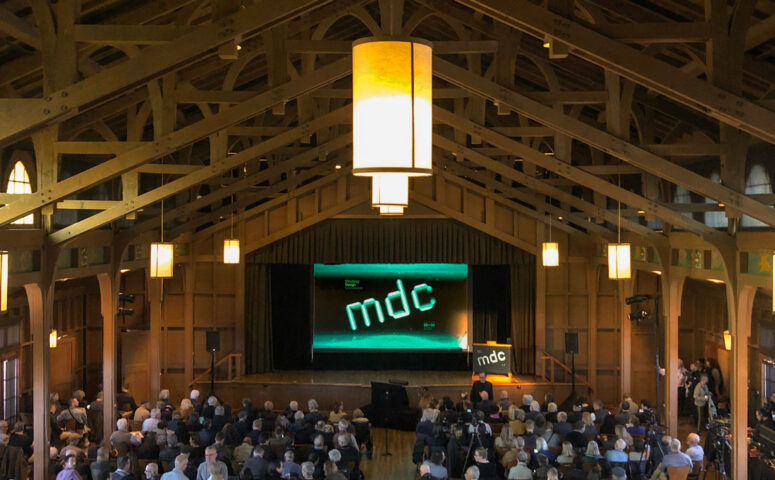For years, I would attend the AIACC Monterey Design Conference at Asilomar and write a round-up of what I saw and heard. And complain about the food and technical glitches. But now, my friends get awards for long careers and the star architects are over 90. This year, I went to only a few presentations and sat on the beach. (I also didn’t eat the food.)
Reed Kroloff, principal of jones|kroloff in Chicago, returned as co-host, joined this year by Los Angeles author and radio personality Frances Anderton. Anderton is known to many of the attendees by her voice, since she is a leading radio broadcaster about the built environment. Frankly, she is so charming I think she could be broadcasting on television, or whatever future media comes our way.
Deborah Berke, founder of Deborah Berke Partners, is not nearing old age, despite her claim. But many of the building projects she showed in her presentation were adaptations of old structures. Her work responds to historic landmarks, including, importantly, modern ones. She used lots of statistics to advocate for adaptive reuse as a way to reduce carbon emissions. She also mentioned an article she wrote, “Against Historic Preservation: Transforming Old Buildings for New (Sustainable) Features,” in relation to her approach to bringing new uses to old structures. Of particular interest to me was her addition to I.M. Pei’s work at SUNY Fredonia. Her metal- and glass-clad building provides a counterpoint to Pei’s concrete without contradicting it. Her new Meeting and Guesthouse at the University of Pennsylvania addition feels less sympathetic to its historic neighbor, but it’s beautiful, with terracotta cladding. The constant throughline in all the work (and in her presentation) was humility.
On Saturday, the wise old men gave droll and humorous presentations. Emcee Reed Kroloff interviewed the 90-year-old James Wines over Zoom. With his showrooms for BEST, Wines brought art back into architecture, but in a temporal way. All of his now-famous stores have been demolished or altered. “It was architecture for a junk culture,” he said. He was poking fun at culture—both art and architecture.
In the afternoon, local architect and prolific writer Pierluigi Serraino interviewed Bruce Goff disciple Herb Greene about his work. Greene was joined by his grandniece architect Lila Cohen, who is making a documentary about him. Greene is probably best known for his early work, the Prairie House in Norman, Oklahoma. Julius Shulman photographed the house, and it showed up in Life and Look magazines. When Serraino asked Greene if it was hard to get a permit for this house, he responded, “No. We didn’t get one.” His answers were short but often very funny. Although he built only a few buildings in his career, the photographs and sections dazzled the audience. He received a standing ovation.
There were book signings by pals David Baker, Amanda Loper, and Daniel Simons for 9 Ways to Make Housing for People, their new instructive book on architecture, urban design, and housing. Bill Leddy, Marsha Maytum, and Richard Stacy were on hand to sign their new monograph, Practice with Purpose: A Guide to Mission-Driven Design. And then noted architectural photographer Art Gray was with Frances Anderton to sign her new book on housing in Los Angeles. ORO Editions has been busy.
The Friday night party was loud and great fun, with horizontal dancing by architect David Hecht and great tunes from Bubba’s Taxi featuring architect Byron Kuth on drums! On Sunday, I felt a little old and slept through the morning.

Photo by Art Gray
